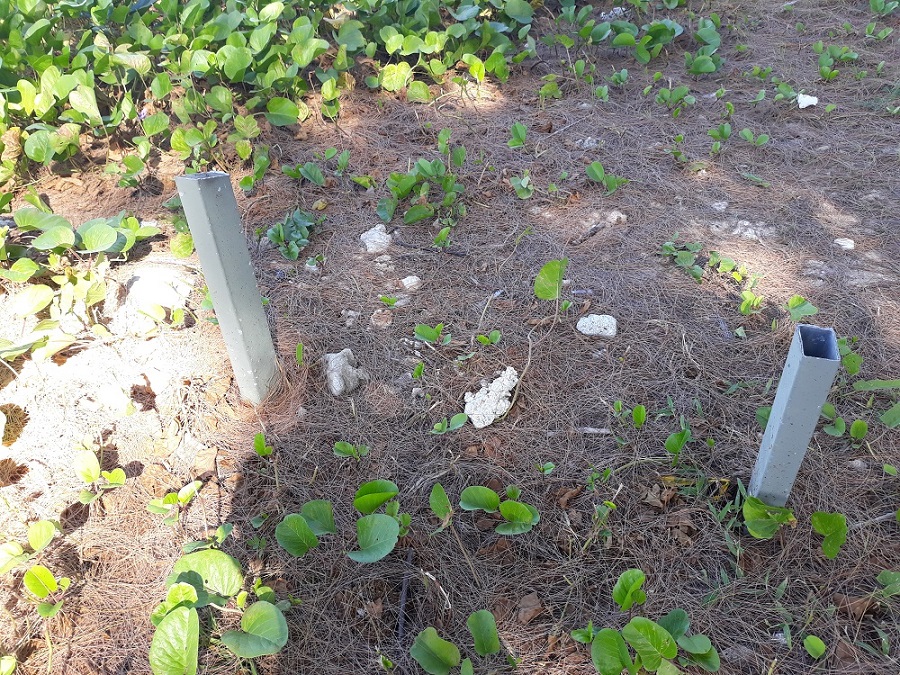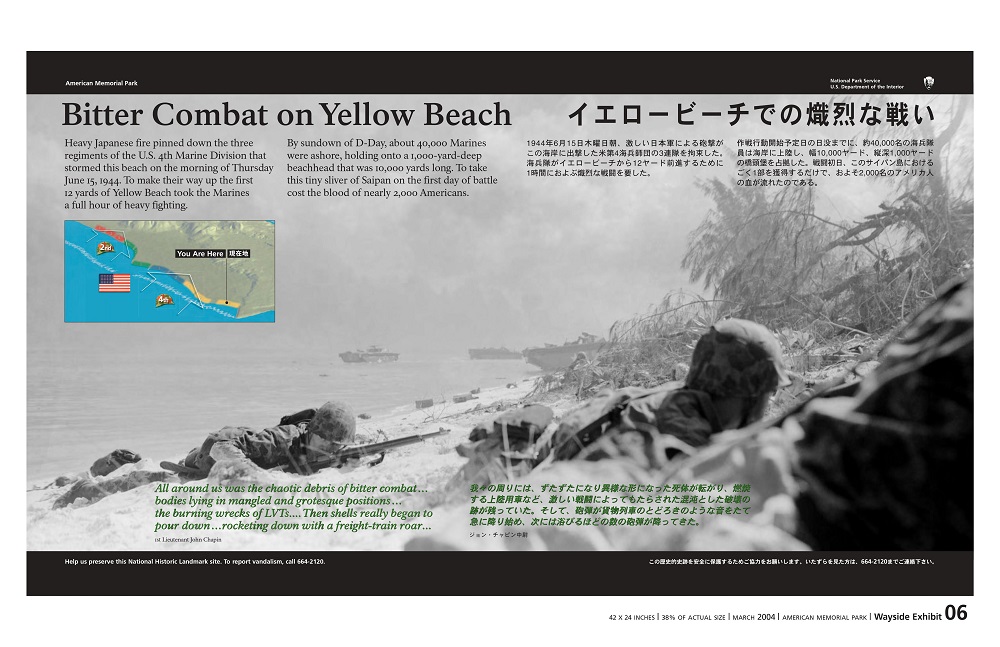 Map of Saipan
Map of Saipan
& Tour Route
Location: Western Pacific
GPS:15°7'53.00",145°43'42.00"
Driving directions
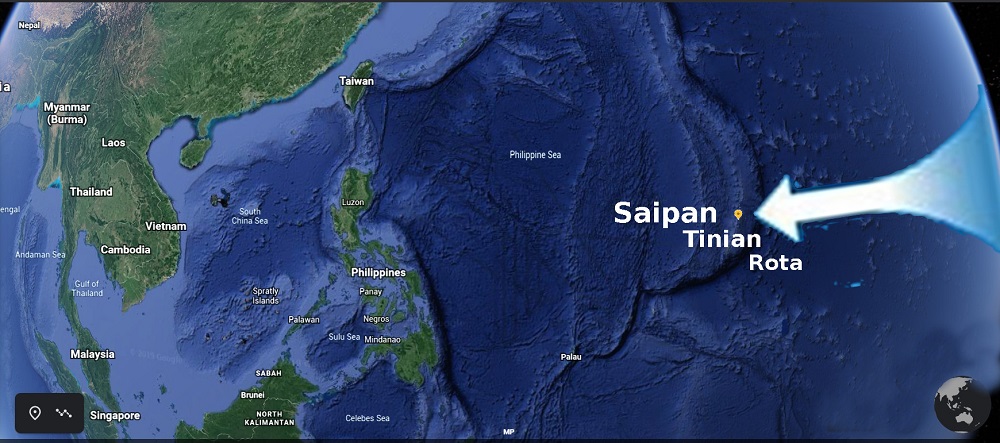
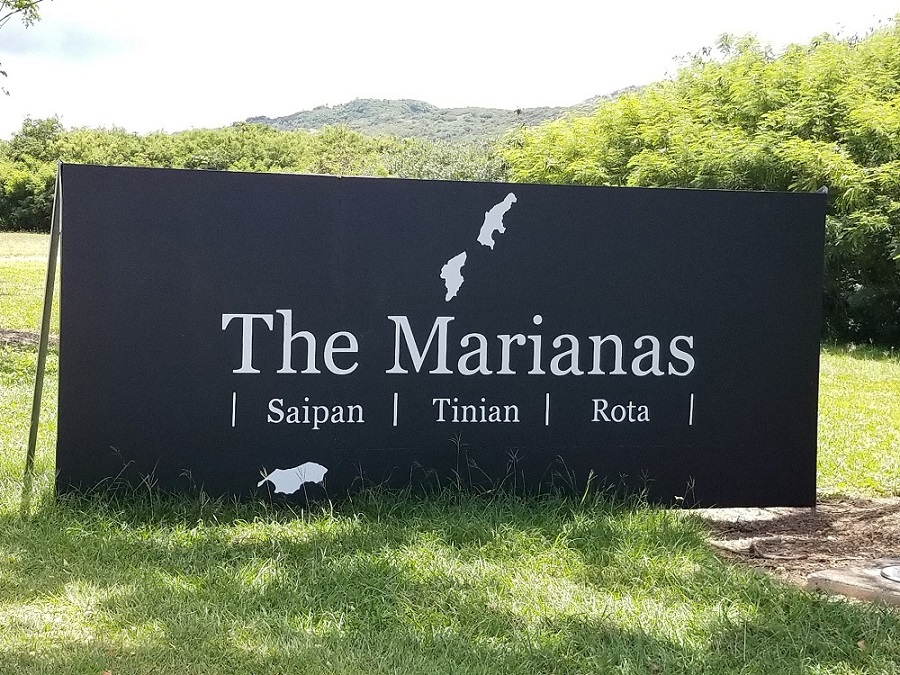
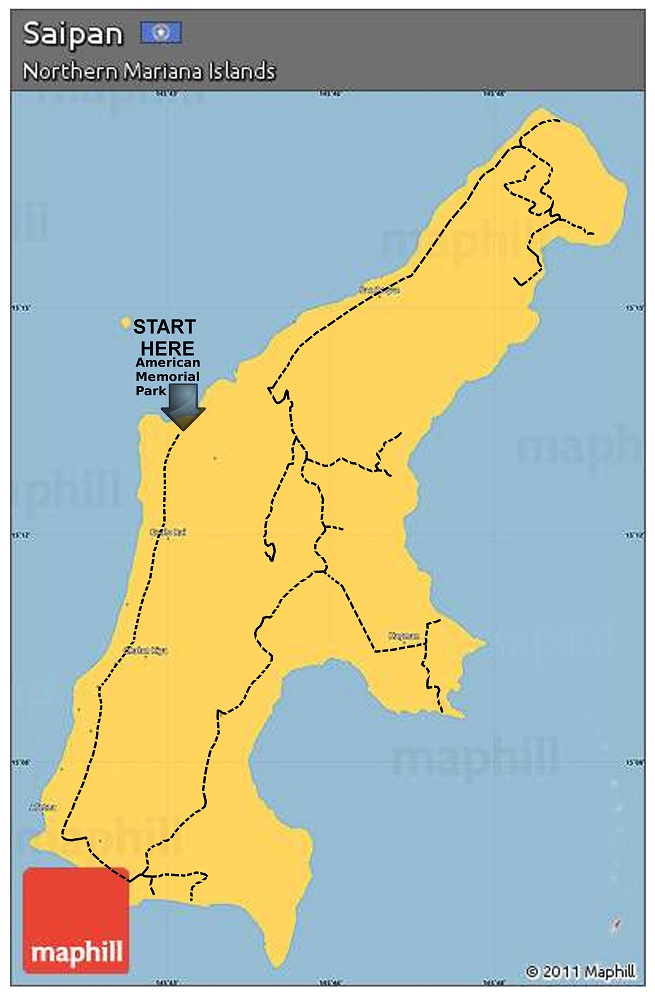
Categories: World War II



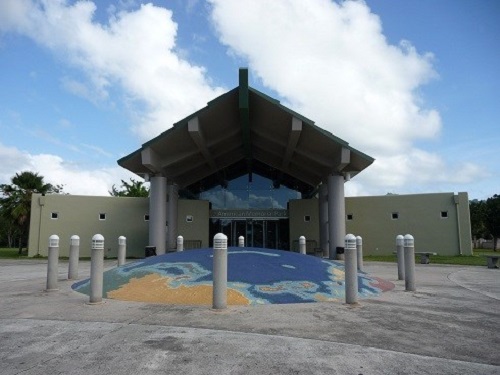
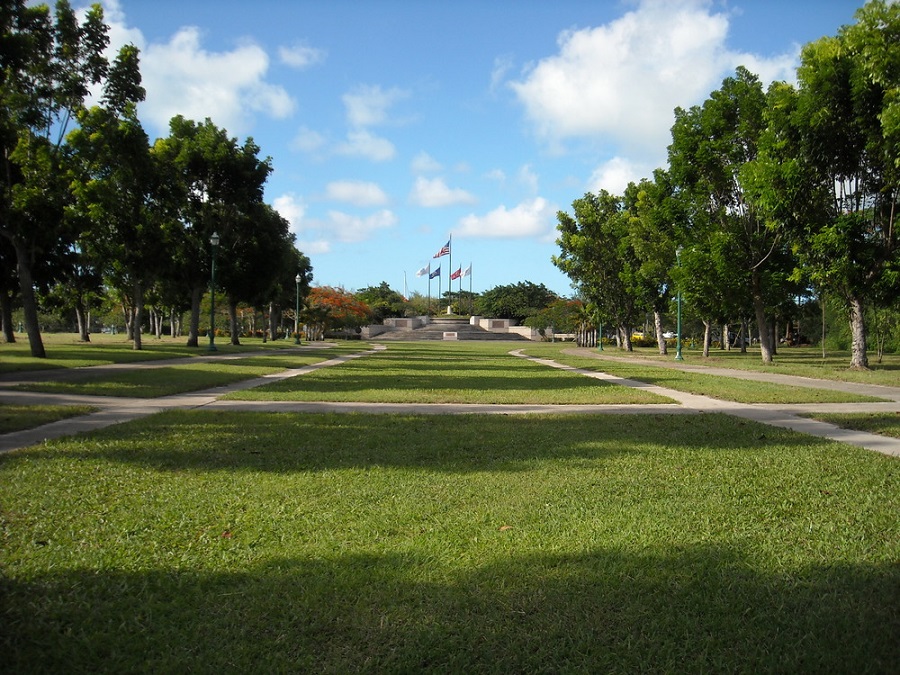
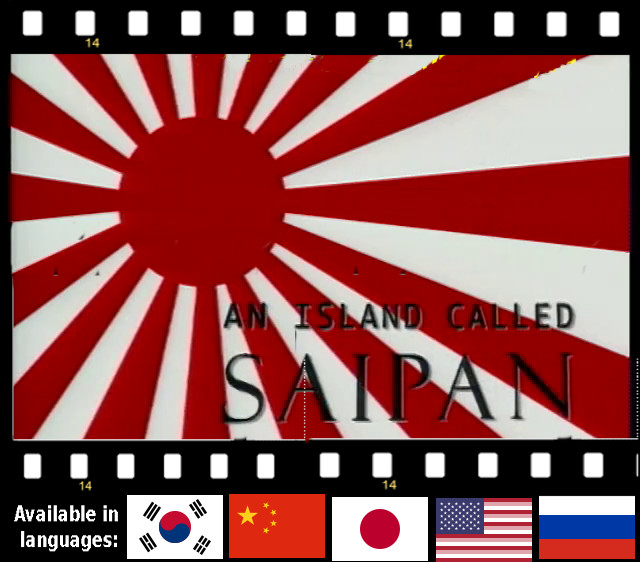
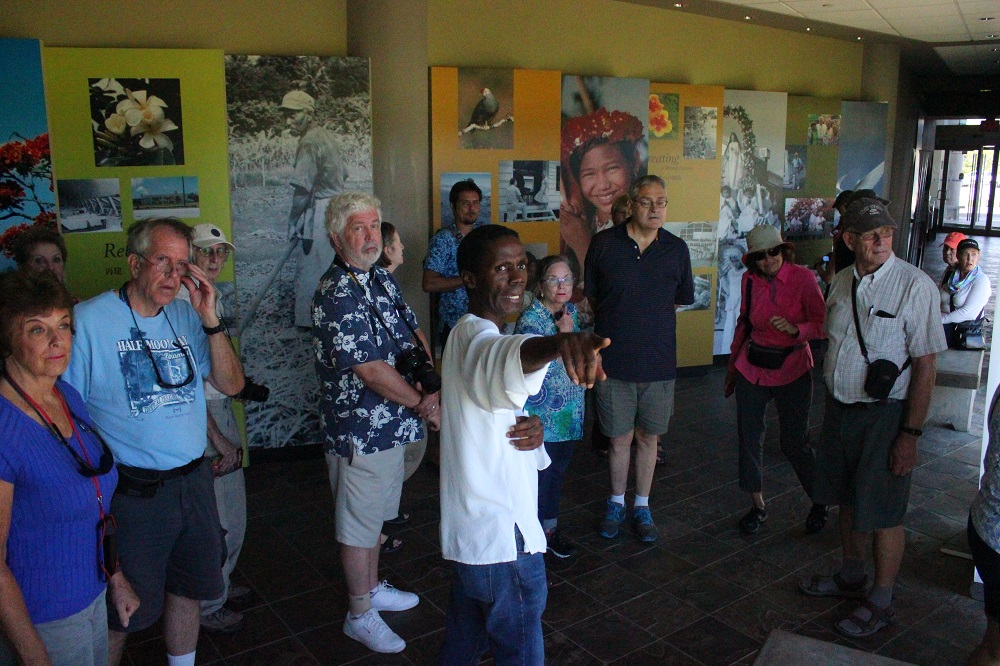
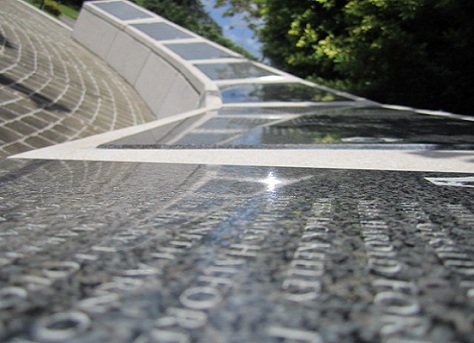
26 Granite Panels inscribed with 5,204 names of service personnel who perished in the Marianas Campaign during World War II Plaque One (left):
Monument: "Here in this American Memorial Park, a grateful nation honors and mourns its fallen sons in the World War II Battles for Saipan and Tinian and the Battle of the Philippine Sea. Their supreme sacrifice in the bright morning of their lives far from home contributed to the victory won and to the peace that followed. In solemn rememberance, their names are here forever inscribed these park grounds. The Court of Honor and the Flag Circle flying the service colors under which they bravely fought. Rededicated in humble tribute to their lasting memory." [Dedicated by the United States of America, 1994]
Categories: World War II, Chamorro/Carolinian/Pacific Culture
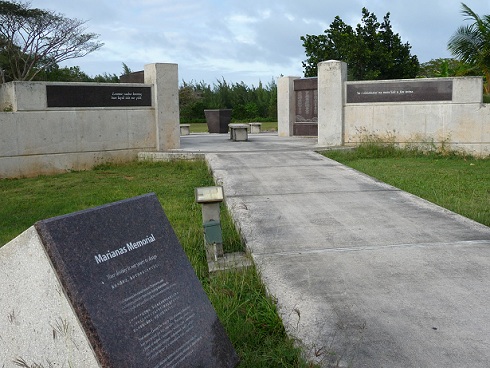
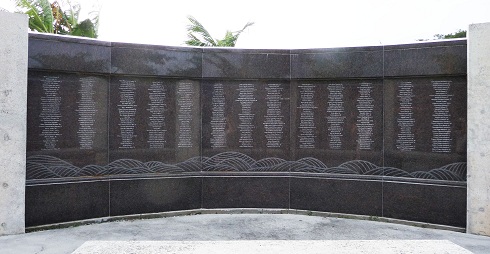
10 granite panels inscribed with 929 names of indigenous Chamorros and Carolinians who died during World War II. Plaque: "This Marianas Memorial honors Chamorros and Carolinians who lost their lives during World War II. Their plight and sacrifices will be remembered for all time."
Categories: World War II, Chamorro/Carolinian/Pacific Culture

"This Memorial has been erected by the United States of America in humble tribute to its sons who paid the ultimate sacrifice for the liberation of the Marianas 1941-1945."
Categories: World War II
Your local guide can show you recent newspaper clippings like these showing the impact the Battle of Saipan continues to have on life here as well as in Japan over 75 years after the invasion--from the ongoing search for the missing to finding unexploded bombs in residences and construction sites.
Categories: World War II, Contemporary CNMI life
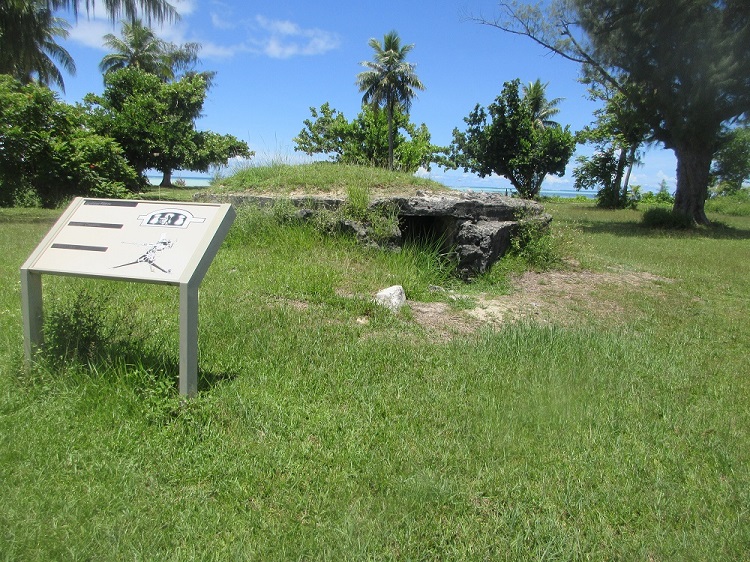
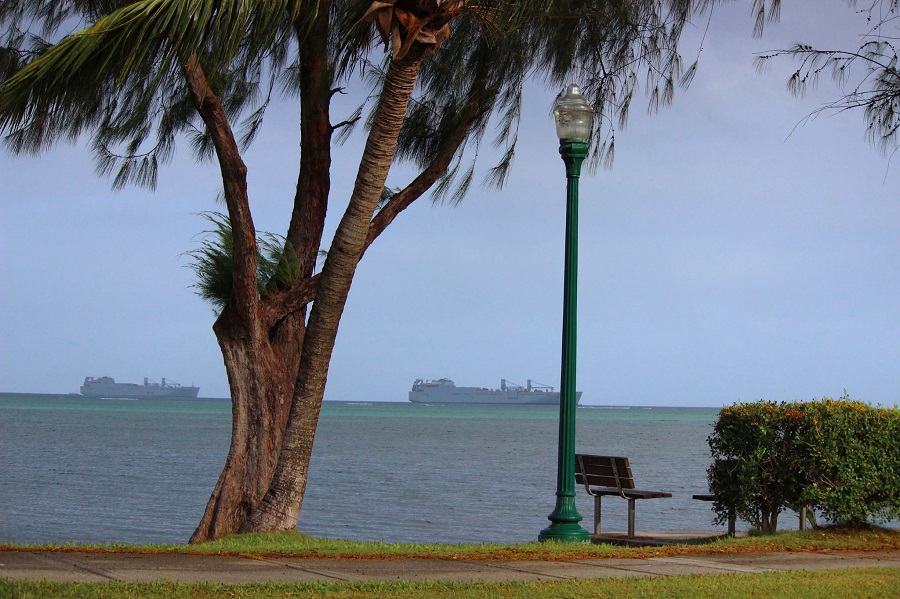
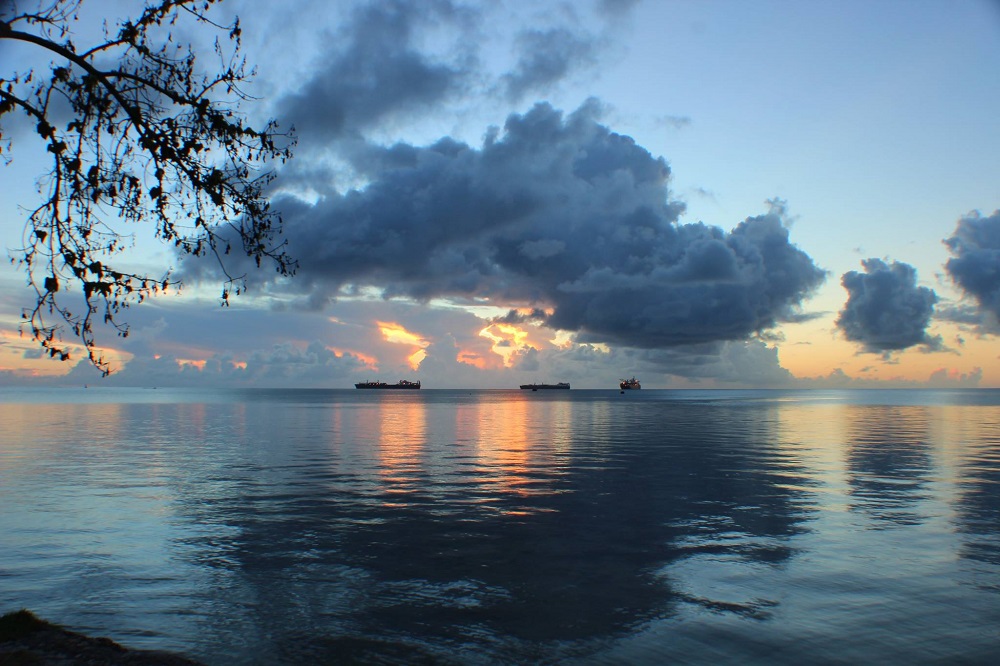
Strategic sealift ships are part of the United States Military Sealift Command's (MSC) prepositioning program. There are currently 49[1][2] ships in the program, strategically positioned around the world to support the Army, Navy, Air Force, Marine Corps and Defense Logistics Agency. Most are named after Medal of Honor recipients from the service they support.[2][3][4] The ships are assigned to two[5] Military Prepositioning Ship (MPS) squadrons[6] located in the Indian Ocean at Diego Garcia and in the Western Pacific Ocean at Guam and Saipan.
The MPS ships in each squadron have sufficient equipment, supplies and ammunition to support a Marine Air-Ground Task Force for 30 days. The MPS ships are self-sustaining, with cranes to unload at sea or pierside. MSC chartered the first two ship classes in the MPS role (the Corporal Louis J. Hauge Jr. and Sergeant Matej Kocak classes) from civilian shipping lines and converted them. Later ships were purpose-built. Anywhere along Beach Road as well as Mount Tapochau are good locations to see the ships. The GPS coordinates provided are from a point on Micro Beach
More information: https://en.wikipedia.org/wiki/Strategic_sealift_ships
Categories: Contemporary CNMI life
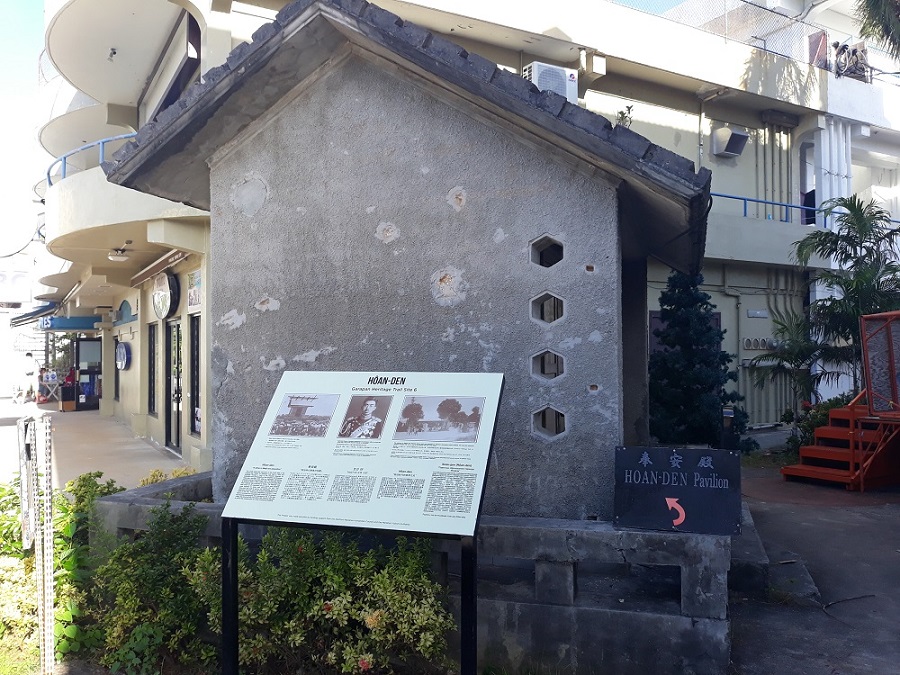
“A shrine to Meiji-era education”This small shrine-like structure on the north side of the present-day Paseo de Marianas was built in 1935 and originally housed a copy of the Imperial Rescript on Education and photographs of the Emperor and Empress. Hôan-den typically were sited at Japanese elementary schools from the 1910s through 1945. The Rescript, issued by Emperor Meiji in 1890, outlined the moral principles that each national was expected to follow. The Rescript was read aloud at all important school events and students were required to study and memorize the text. This Hôan-den was built to service the elementary school for Japanese students which was located immediately to the north of this site. Following established practice, it was built of concrete and equipped with a steel door to protect the Imperial photographs from damage by fire. In the late 1980s, this structure was relocated a few meters to the east to permit the construction of a new commercial building.
Heritage: This site is Garapan Heritage Trail Site 6
Categories: Pre-war Japanese society
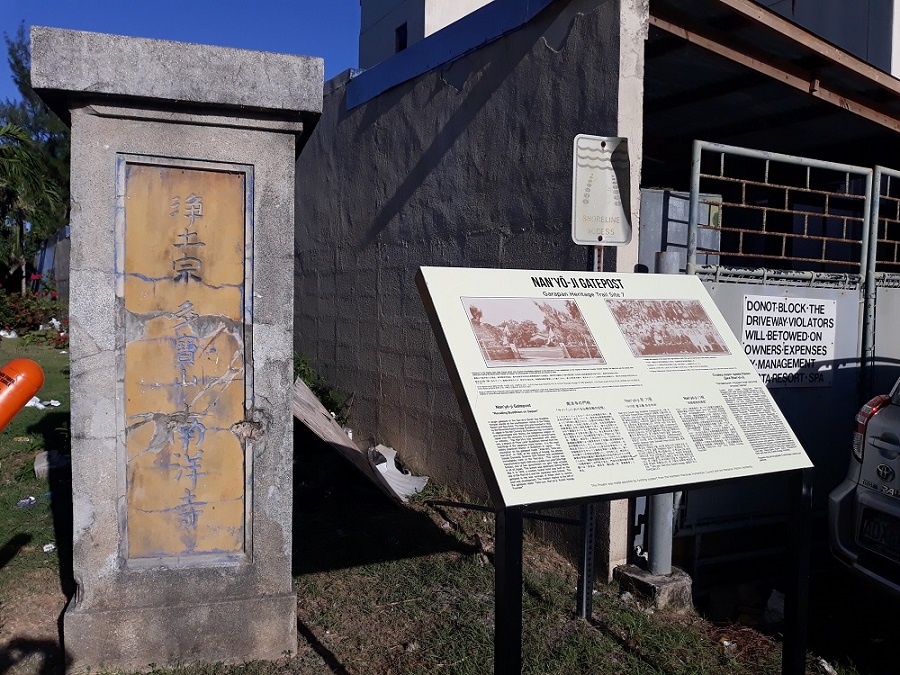
You're probably wondering what that huge, imposing, ornately decorated building in the middle of Garapan is. Well, it's the controversial Best Sunshine casino.
Categories: Contemporary CNMI life
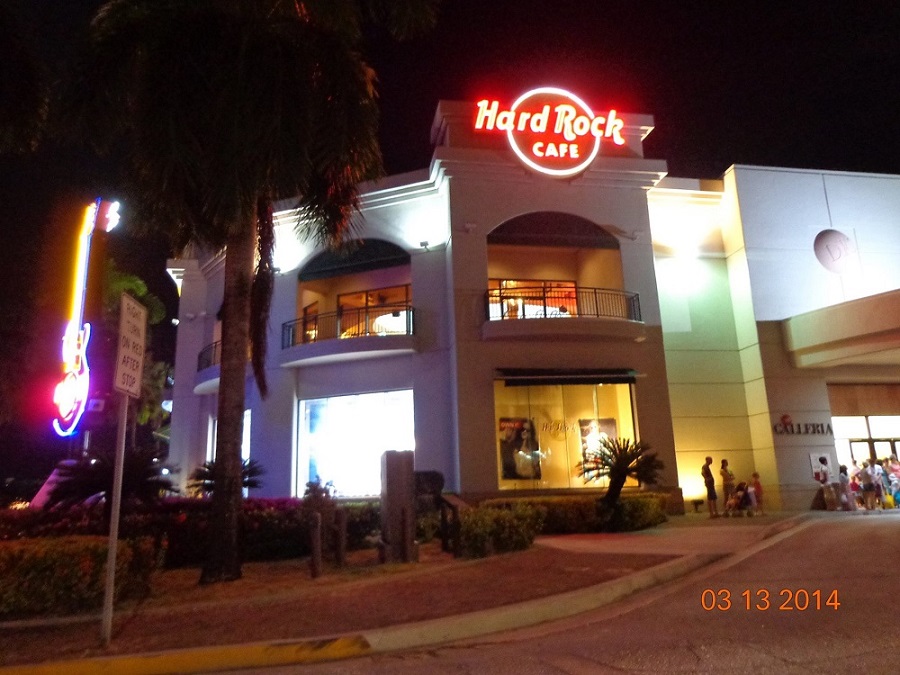
A commercial establishment, but still a favorite spot to visit among tourists. Hard Rock Cafe Inc. is a chain of theme restaurants founded in 1971 by Isaac Tigrett and Peter Morton in London. In 1979, the cafe began covering its walls with rock and roll memorabilia, a tradition which expanded to others in the chain. In 2007, Hard Rock Cafe International (USA), Inc. was sold to the Seminole Tribe of Florida and was headquartered in Orlando, Florida, until April 2018, when the corporate offices were relocated to Davie, Florida.[2][3] As of July 2018, Hard Rock International has venues in 74 countries, including 185 cafes, 25 hotels, and 12 casinos. The location on Saipan opened August 18, 1998
This is a Geocaching site! Join the treasure hunt at geocaching.com!
Categories: Contemporary CNMI life,
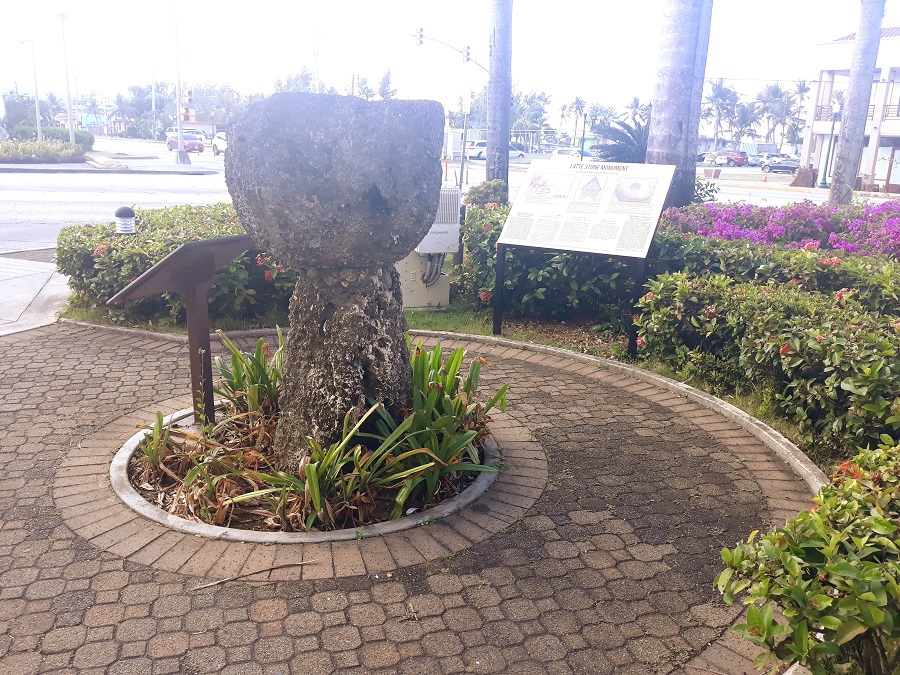
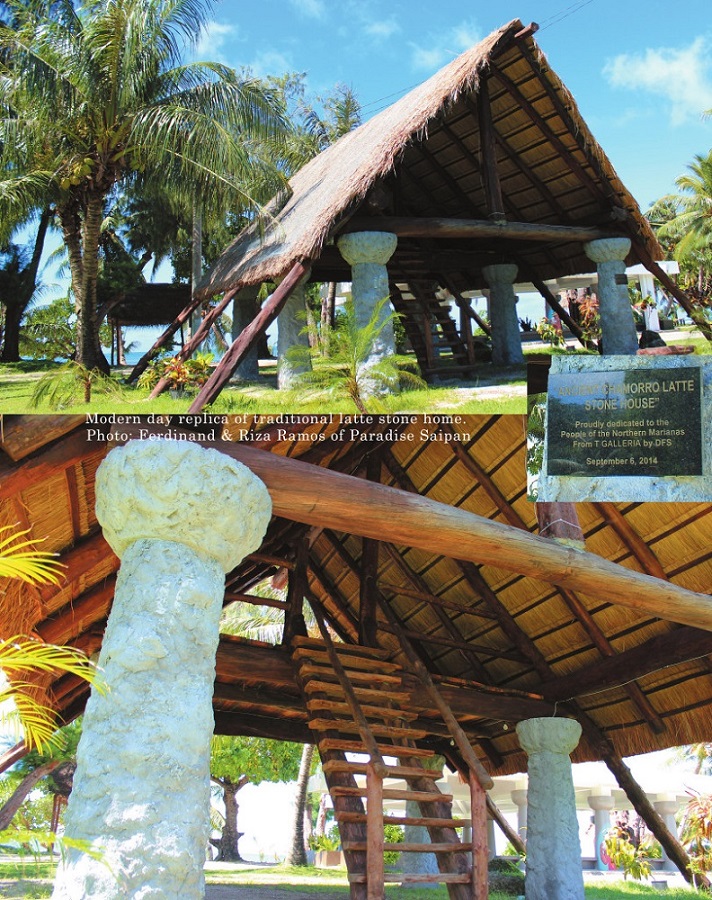
A Project of the Carolinian Affairs Office, The images below are from the photo book, Saipan Now!You can pick up a copy at Bestseller Bookstore here on Saipan, or you can order a copy to be mailed to your home anywhere in the world, and it should be waiting for you when you get back home!
More information: https://www.facebook.com/pages/category/Government-Organization/Carolinian-Affairs-Office-Bwulasiyool-Refaluwasch-188706355261332/
Categories: Chamorro/Carolinian/Pacific Culture
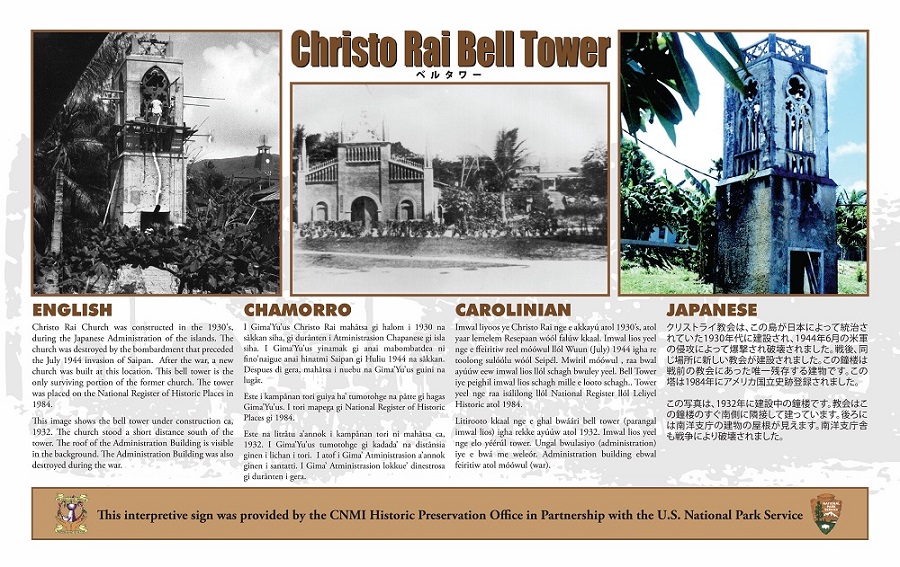
If you're on Saipan on a Thursday evening from 5:30pm to about 9pm, you should definitely check out the Thursday Night Street Market in the space between Garapan Dock and Beach Road across the street from Kristo Rai Church. There'll be vendors selling local cuisine, music, cultural performers, arts, crafts and more! A great opportunity to do some people-watching of local residents as well as tourists on the island of Saipan!
Categories: Contemporary CNMI life
This popular site features a Japanese tank atop a bunker and marks the northern-most landing beach (Red Beach) of the American invasion of Saipan.
Categories: World War II
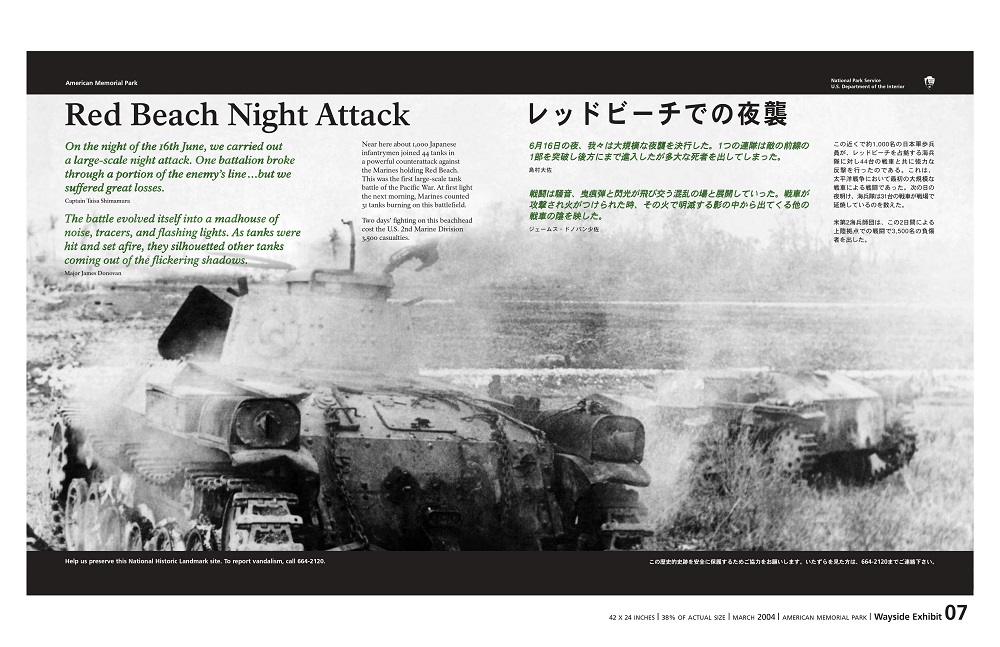
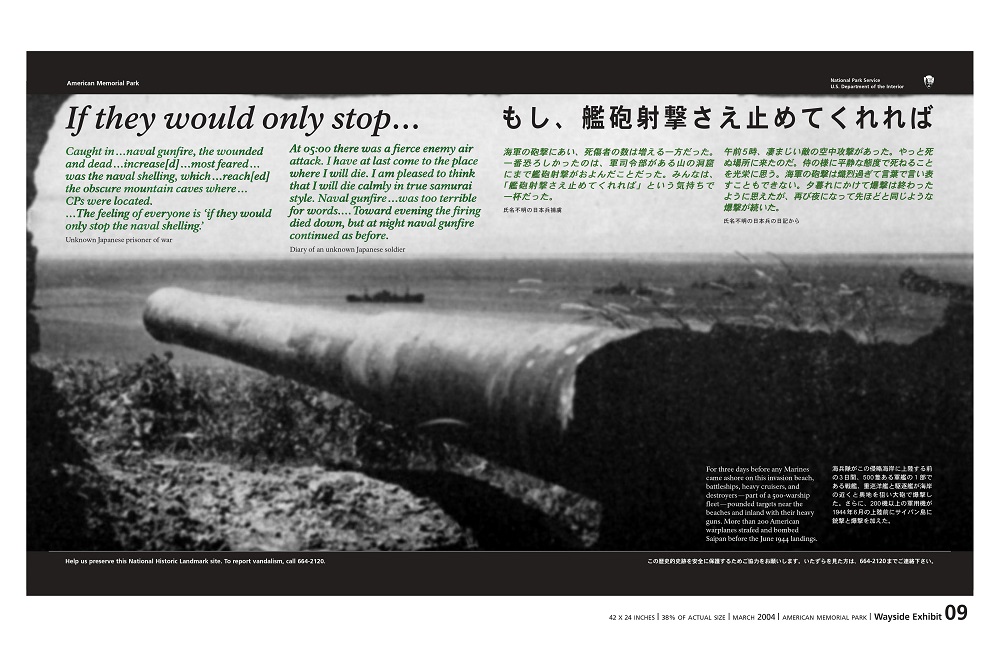
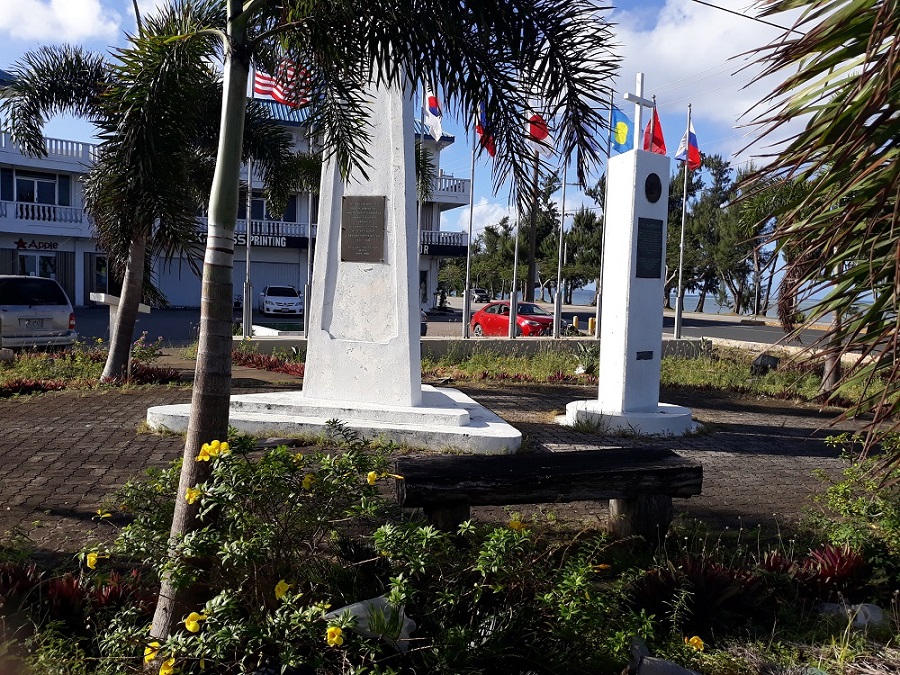
In Memoriam
"On June 15, 1944, the United States armed forces invaded Saipan that day on this spot. The 6th Marines encountered stiff resistance and suffered heavy losses in personnel and equipment. The island was declared secured on July 9th. Total Army, Navy and Marine Corps personnel killed in the battle for Saipan was 195 officers and 2,949 men.
This memorial is in honor of those who with unselfish devotion gave their lives in the service of their country."
Island Beautification Project, October 2013.
The vision of the Office of the Mayor of Saipan and through the generous donation by the P&A Corporation, this island beautification project was made possible by the following individuals: Kim, Hong Kyun, President of P&A Corp., Antonio C. Lim, Project Planner, Hon. Donald G. Flores, Mayor of Saipan
Improving the community for residents and visitors by giving back is a responsibility we must perpetuate.
Categories: World War II, Memorial
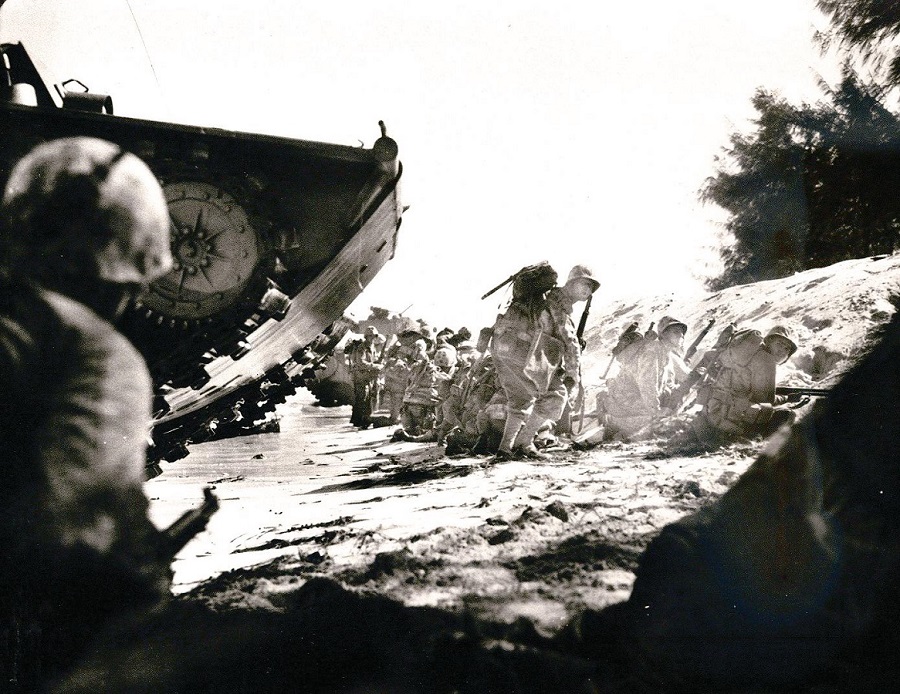
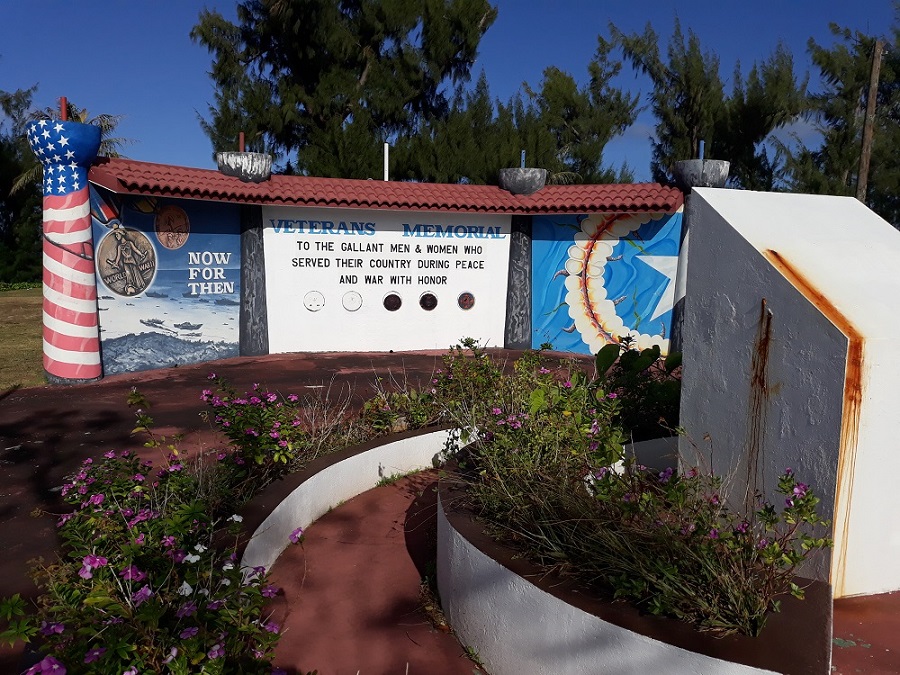
"To the gallant men and women who served their country during peace and war with honor"
Categories: Memorial
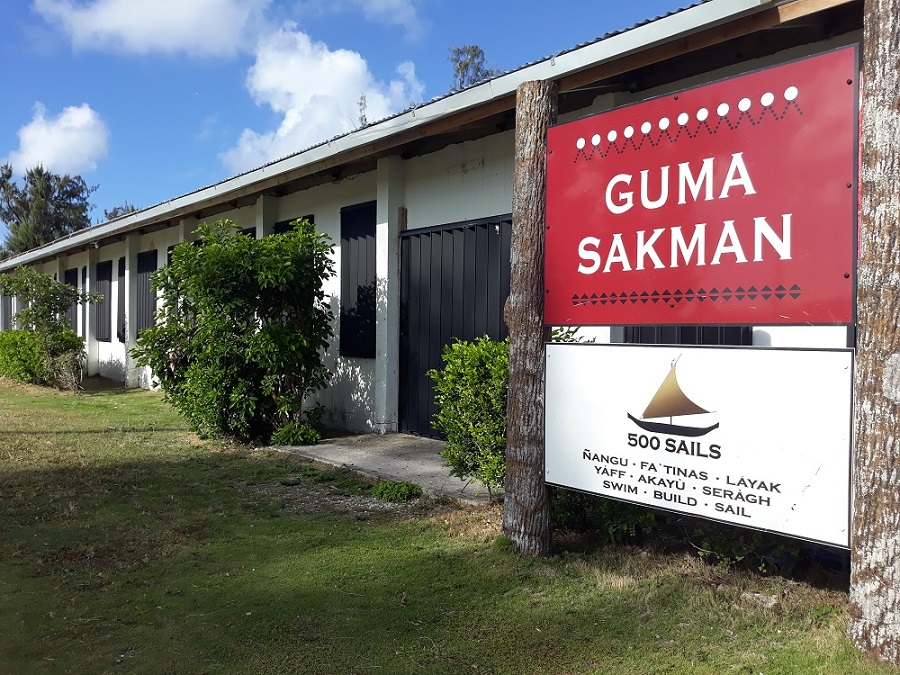
Guma Sakman is the home of the 500 Sails Project. The name "500 Sails" was inspired by the arrival of the Spanish galleon San Pedro at Guam in 1565, when it was met by the Chamorros in their sailing canoes. Our goal is to reclaim the maritime tradition in the Marianas by getting 500 traditional Chamorro and Carolinians proas on the water in the Marianas again. By matching the number of proas seen on the water in 1565, we will have restored our maritime traditions. The target date to accomplish this is 2030.
The 500 Sails Guma Sakman (canoe house), opened in June, 2017. Programs conducted at the Guma Sakman include:
• Proa Sailing
• Water Safety (including open-water swimming)
• Boating Safety
• Cultural Programs (including maritime history, language and navigation)
More information: http://500sails.org
Categories: Chamorro/Carolinian/Pacific Culture, Contemporary CNMI life
This unique project sponsored by the CNMI Department of Community and Cultural Affairs (DCCA) seeks to preserve the unique canoe-building and celestial navigation tradition within Pacific island culture. Expert boat builders and master navigators have been brought in to share their knowledge and skills with the local population and youth in that effort. Here you can see an actual canoe in process, and you may get to meet one of the master builders if you know when to visit! Ask your local guide!
Categories: Chamorro/Carolinian/Pacific Culture
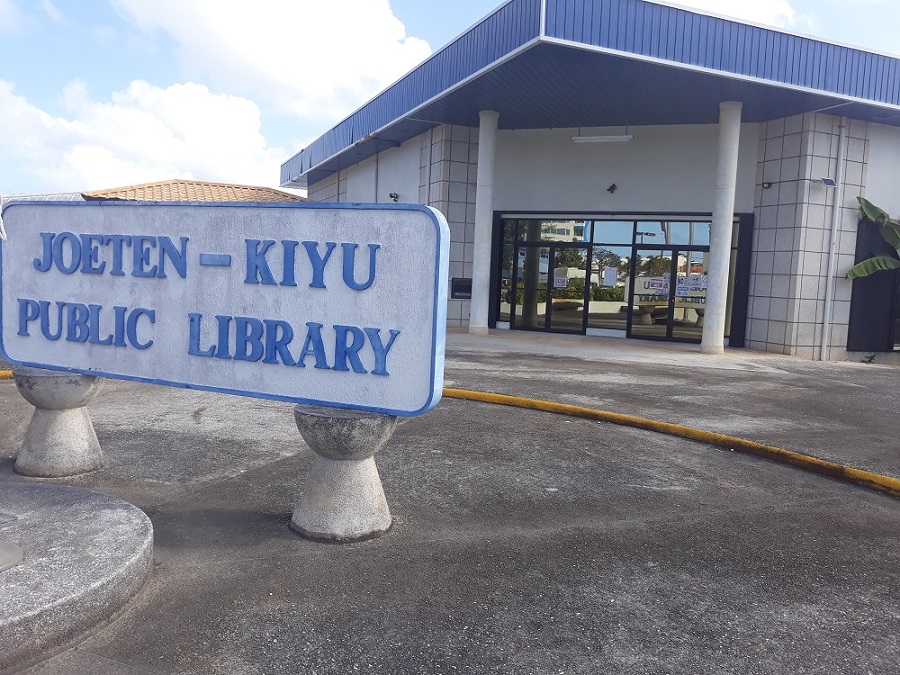
You never know what you'll find at Saipan's public library: free Chamorro language classes, Ukelele lessons, art exhibits, writer workshops, and books in different languages and by local authors to read on the beach during your vacation! There's also a cellphone charging station!
Categories: Contemporary CNMI life
You have to get up early for this one! Starting at 6:00am every Saturday morning at Kilili Beach Park in Susupe, you'll find local farmers offering a variety of fresh locally-grown fruits and vegetables as well as some flown in from Rota, plus some local dishes as well as house plants for sale. Get there early! The best selection goes quickly!
Categories: Contemporary CNMI life
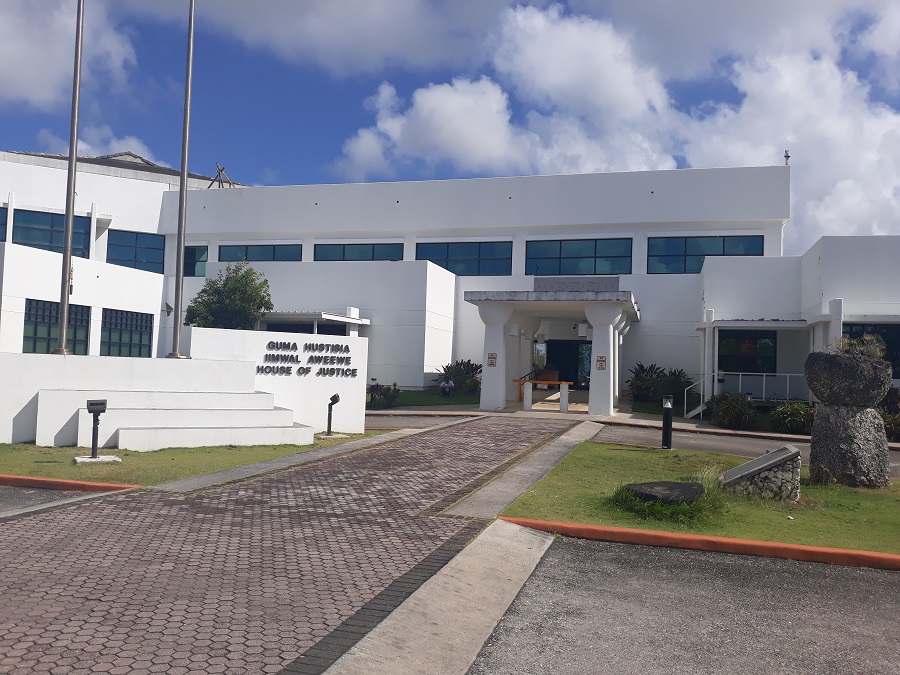
Yes, it seems like an unusual place for a tourist to visit, but if you're looking for local culture, you'll find an actual latte stone on the courthouse grounds as well as a fascinating display inside the building featuring photographs of Pacific island culture from the over a hundred years ago!
Categories: Chamorro/Carolinian/Pacific Culture
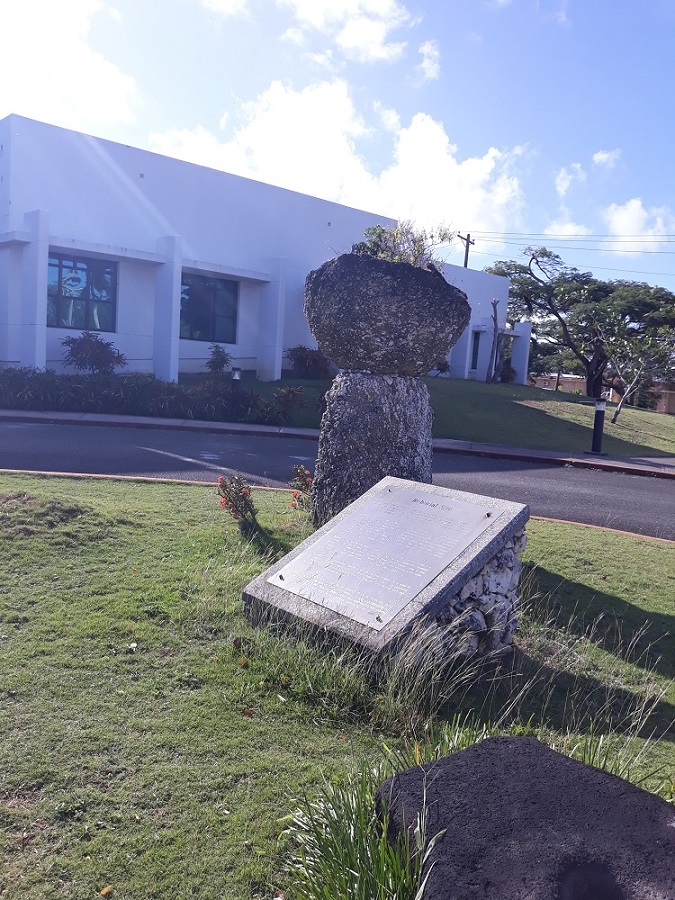
[Directly in front of Superior Court Building] "Between the 13th and 17th centuries, there was a traditional Chamorro village on the land now occupied by the Saipan Judicial Complex. Based on early historical records, it is possible that the sites was part of the traditional village of Catahuda that was occupied until the forced abandonment of Saipan in the mid-1700s.
Archaeological excavations completed at the site recovered stone, shell and bone tools, pottery shards and other materials associated with life in this ancient village. These remains suggest that the ancient people who lived here fished in the nearby lagoon and farmed the surrounding lands. Particularly important to their diet were reef fishes and a small marine shellfish called dogas. Seafoods were supplemented with taro, breadfruit, banana, yams and sugarcane. Archaeological evidence recovered from this site also suggests that its residents cultivated rise prior to European contact.
Before being disturbed by modern land-use activities, this ancient village site possessed a complex of latte--the stone pillars and caps that supported Chamorro houses late in prehistoric times. The latter, a unique architectural form, is now the cultural symbol of the modern Chamorro people. Also present were large, basalt grinding stones, called lusong, used to process plant foods.
The archaeological excavations also unearthed the skeletal remains of at least 32 ancient islanders. In keeping with traditional Chamorro respect for ancestral spirits, these remains were carefully removed from the construction area and have been reburied beneath this site.
This monument is dedicated to honoring the memoriy of our ancestors who, over the centures, made this area of Saipan their home. May our understanding of the cultural heritage of the Chamorro people enrich their descendants and others interested n the istory and the cultur of the Northern Mariana Islands.
Categories: Chamorro/Carolinian/Pacific Culture
The Saturday morning market at the Marianas Business Plaza parking lot in Susupe features dozens of vendors selling new and used items ranging from tropical fish to electronics, as well as a small selection street vendor food.
Categories: Contemporary CNMI life
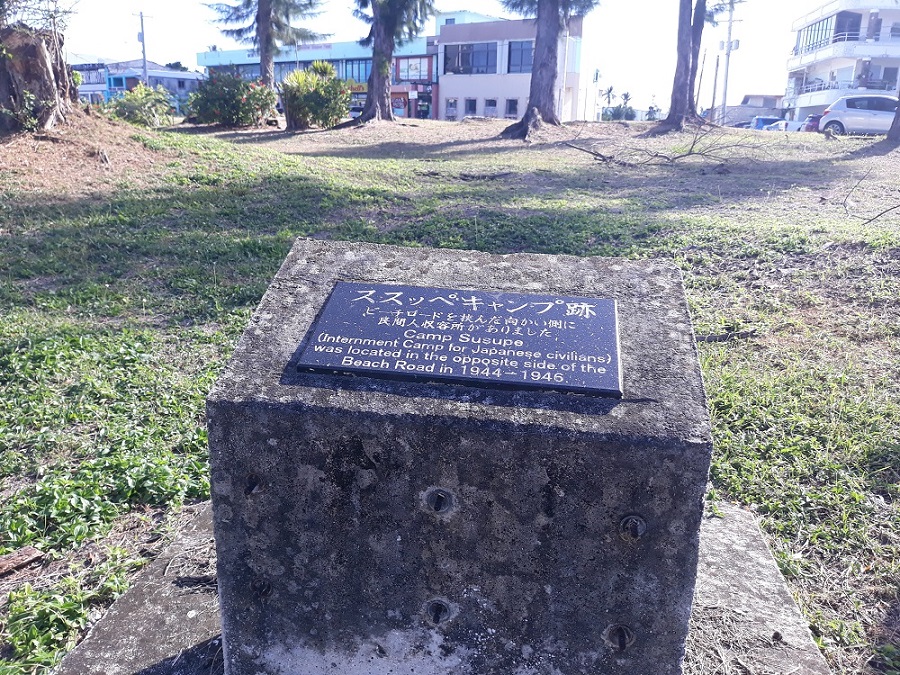
This park is a favorite spot for barbecuing and family gatherings and also features a playground and war relics.
This is a Geocaching site! Join the treasure hunt at geocaching.com!
Categories: World War II, Contemporary CNMI life,

The bunker on the beach at Susupe Park is one of the larger WWII structures on island. With a Sherman tank visible in the lagoon and the Pre-positining ships beyond the reef, this site may offer the best visual cues of what the American troops saw as they landed on this invasion beach during the Battle of Saipan.
Categories: World War II
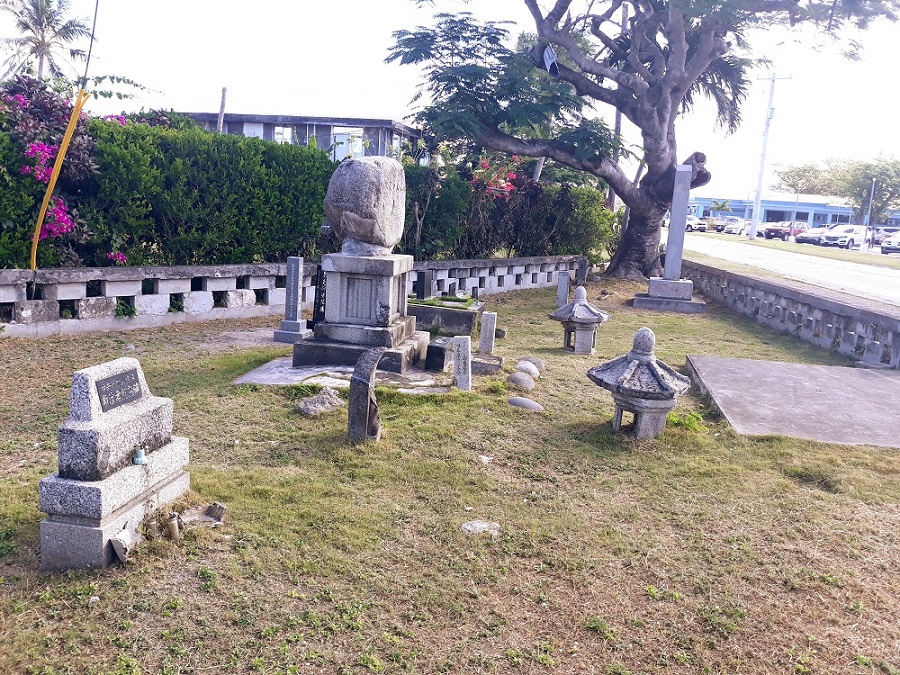
English content pending
Categories: Memorial
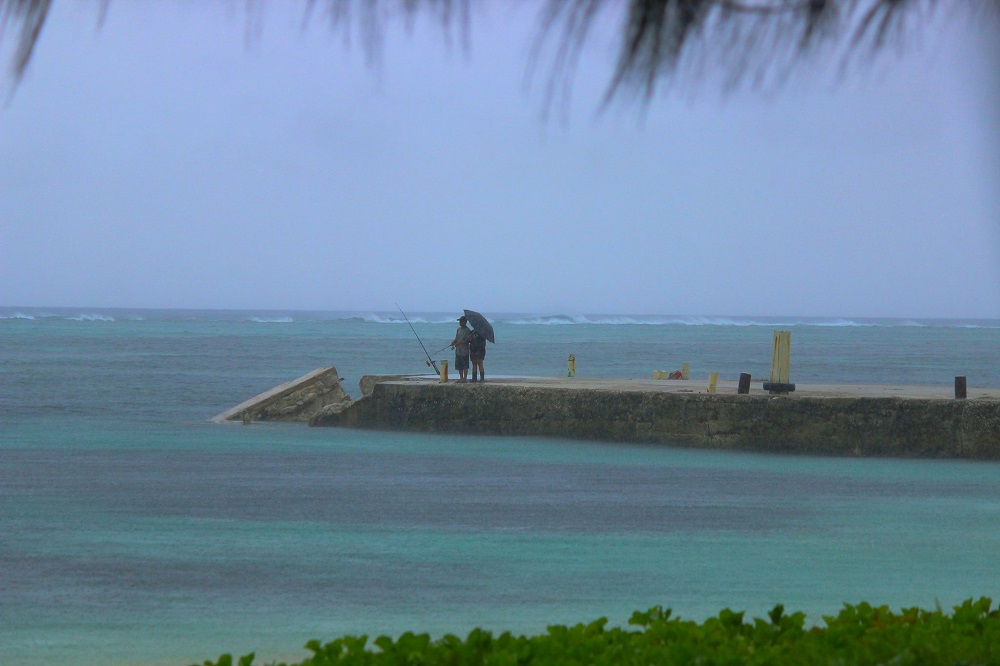
Under the direction of Haruji Matsue, the Nanyo Kohatsu Kabushiki Kaisha (NKKK) established the sugar industry on Saipan. All three major plantations: As Lito, Chacha (Kagman) and Marpi Point provided tons of cane that were processed in the sugar mill and taken to Sugar Dock to be shipped to Japan. After the capture of Saipan during World War II, Sugar Dock was used by the U. S. military. Several intact Japanese Zero ghter planes were taken to Sugar Dock for shipment back to the United States. One of the planes is now on display at the Air and Space Museum in Washington D.C. Today, Sugar Dock, launches boats and is a favorite swimming area for island residents.
Categories: Pre-war Japanese society, Contemporary CNMI life
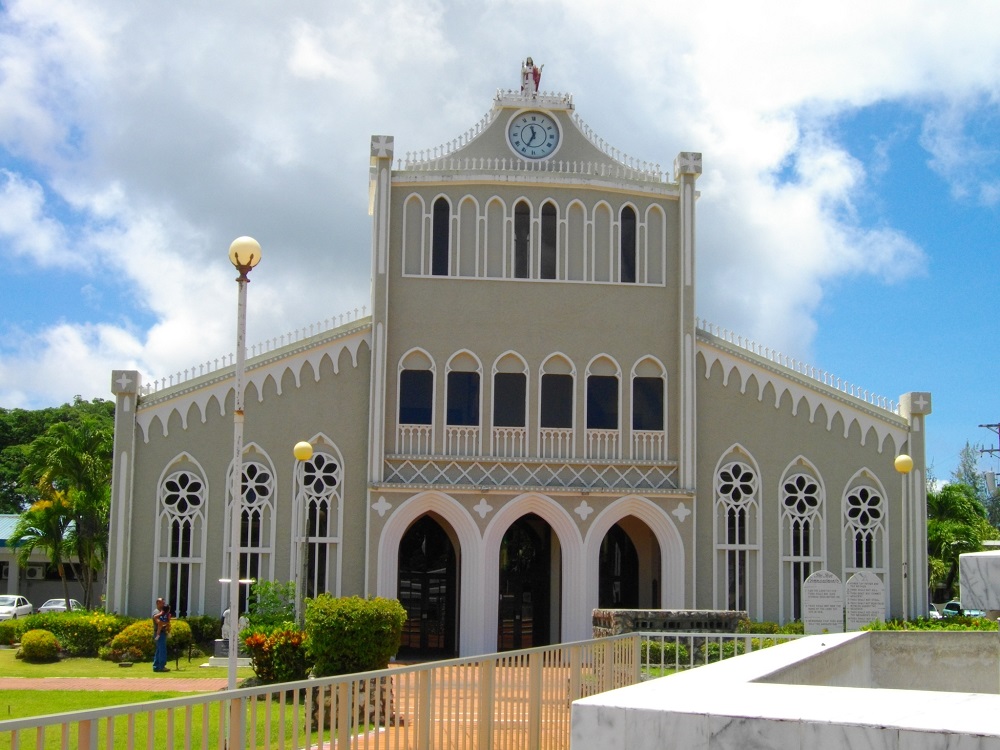
Built by community and surplus building materials supplied by the U. S. military, the present Mount Carmel Cathedral sits on the pre-war Japanese sugar mill (NKKK) site. With beautiful stained glass windows and avor all its own, Mount Carmel Cathedral has been serving as the religious and social center of the island since 1949. The Bishop of the Diocese of Chalan Kanoa, directly appointed by the Pope at Vatican City, holds weekly services here. Visitors are asked to respect the Cathedral grounds by remaining silent and well-mannered.
Categories: Pre-war Japanese society, Contemporary CNMI life
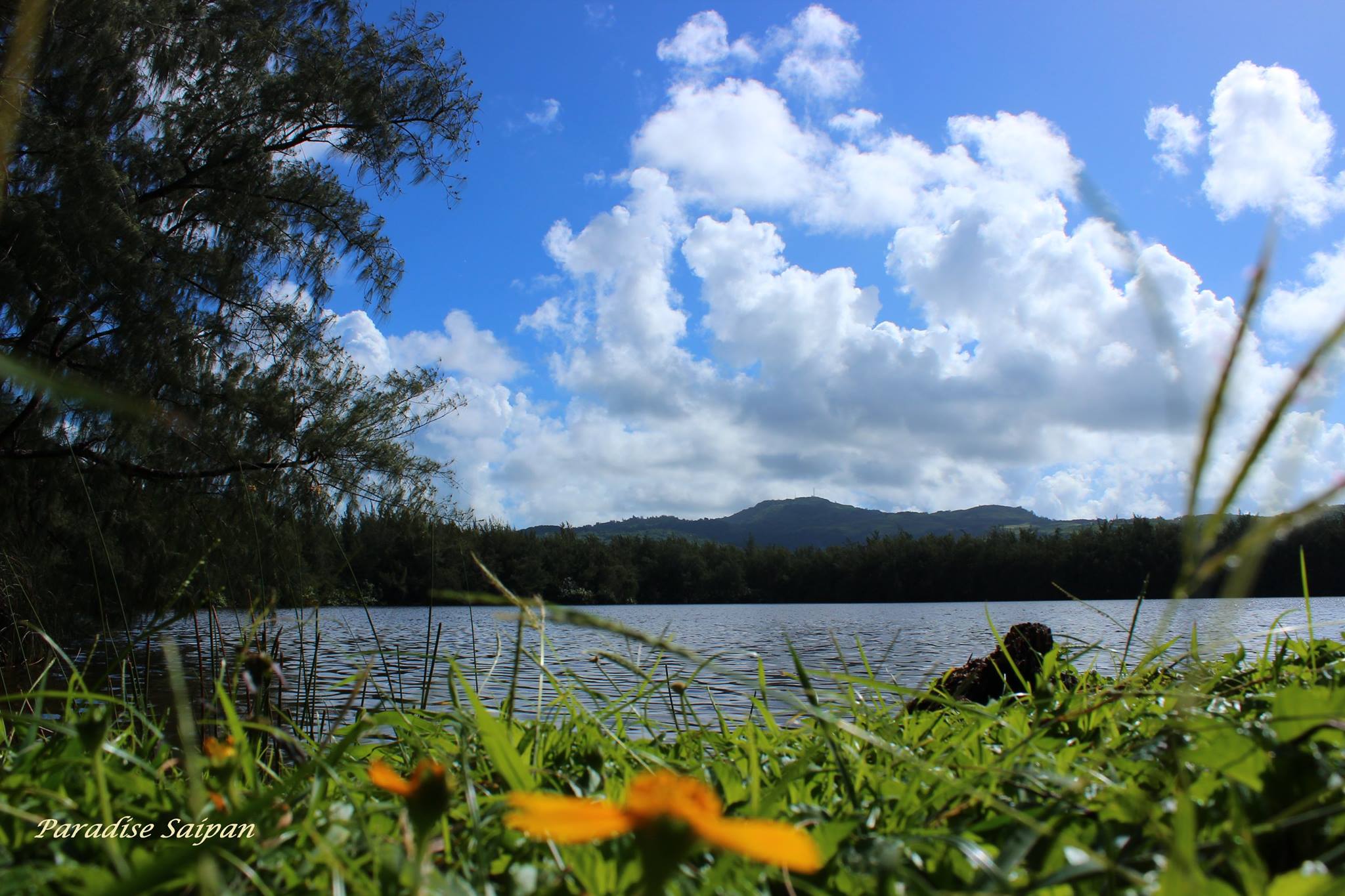
This fresh-water lake is the only lake in Saipan and is located in the village of Susupe. It is home to a few species of birds found only in the Marianas. One of the endangered birds, the Mariana common moorhen, has a Saipan population of 30-40. It is unknown what natural trees grew here because they were cleared in the 1930s to make room for sugar cane fields and the native fish died when the tilapia was introduced in the 1960s. Today, large ironwood trees grow and, in some places, very thick 6-foot-tall (1.8 m) reeds. There are also 17 little ponds around the lake. The ponds and even the lake are home to very large fancy-tail guppies. The lake is often visited by birds from Asia which migrate to Lake Susupe during the winter.
You'll be walking through private property to get to the water's edge. If there is someone there, please be respectful, courteous and ask for permission before proceeding and feel free to show your appreciation.
Categories: Nature
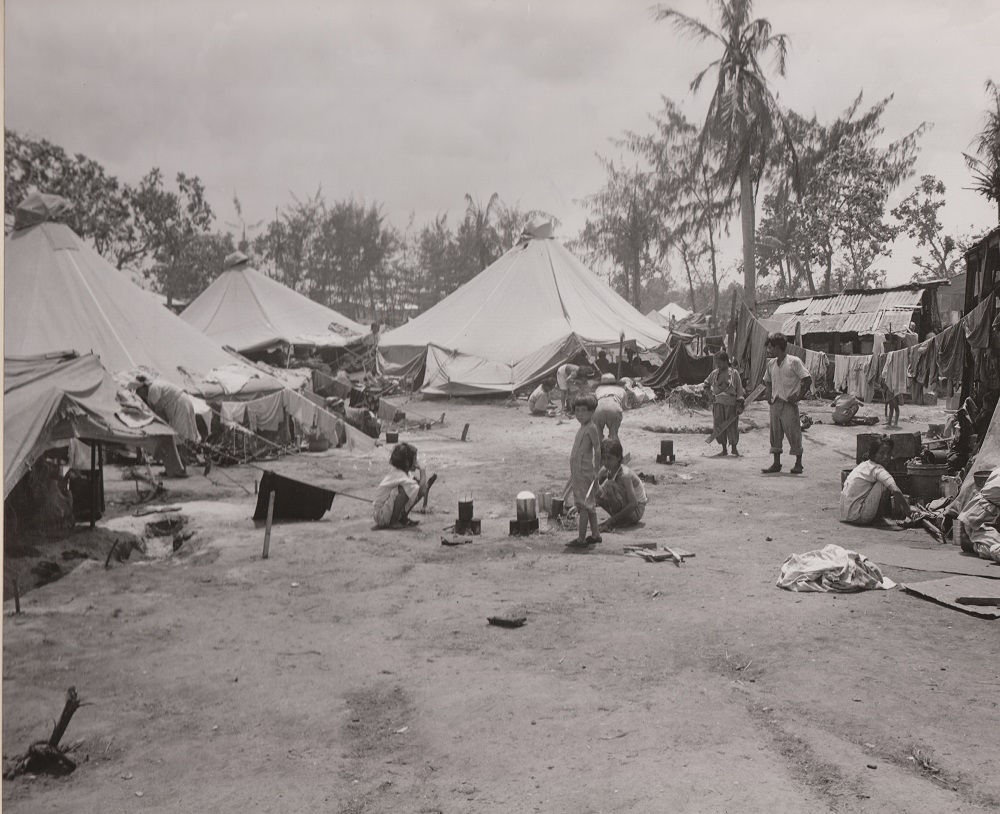
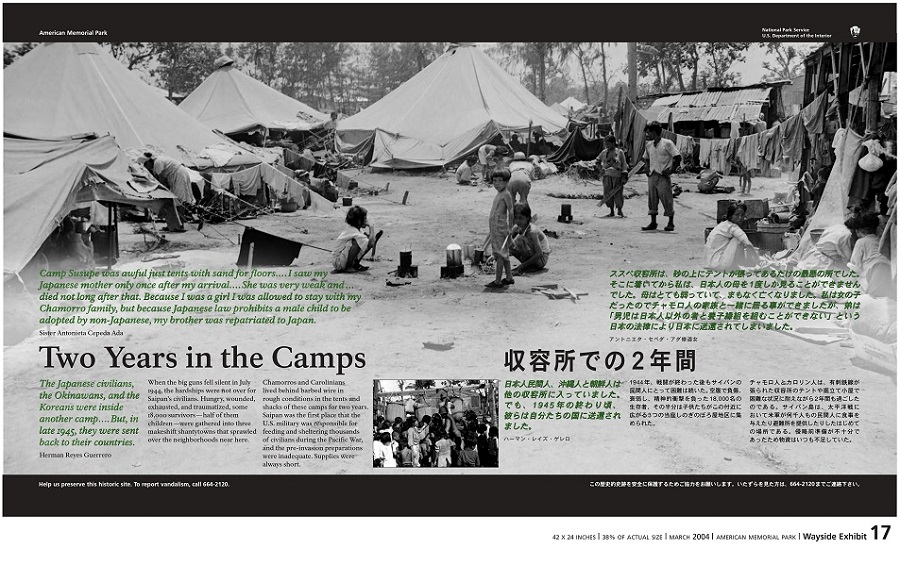
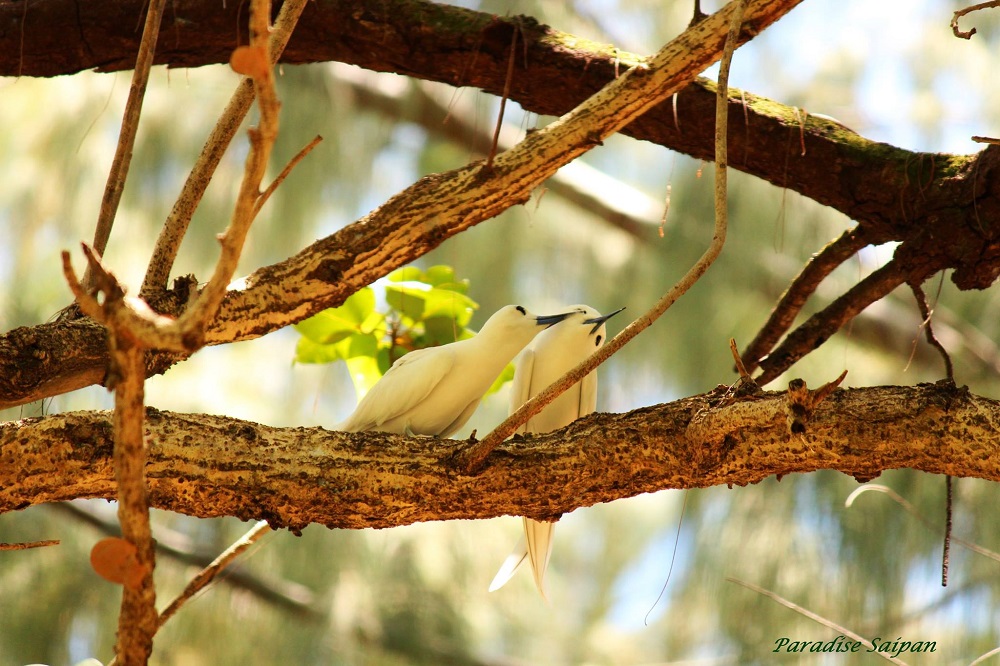
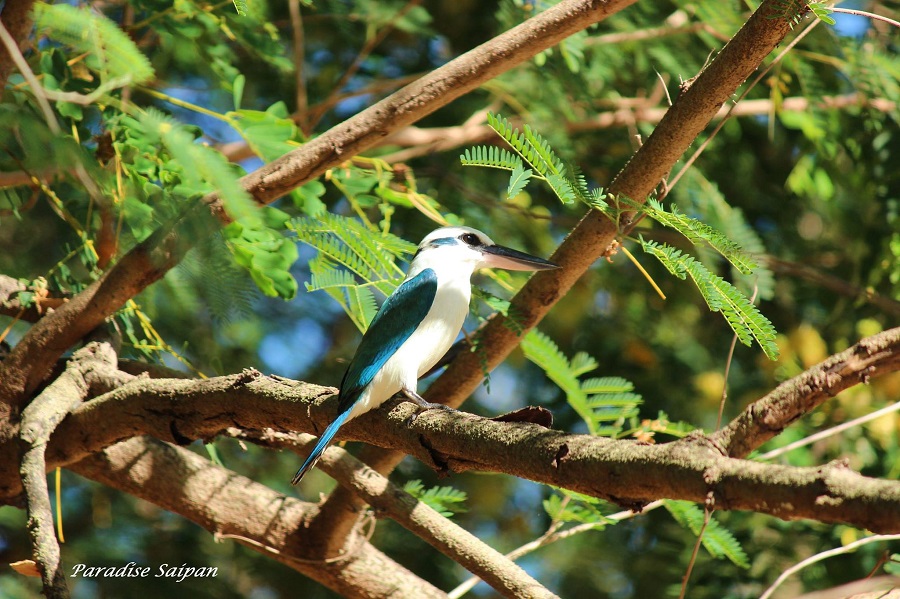
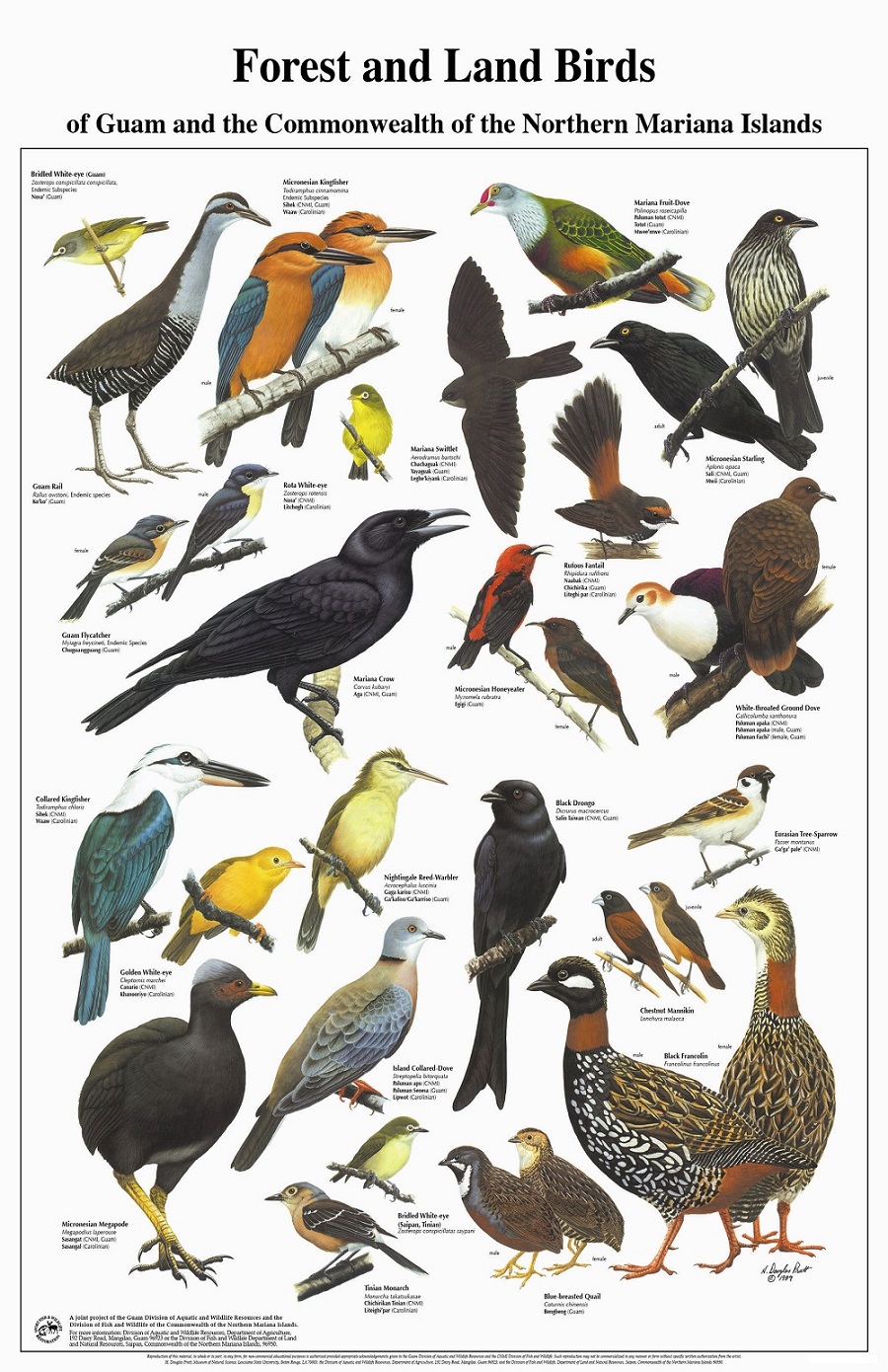
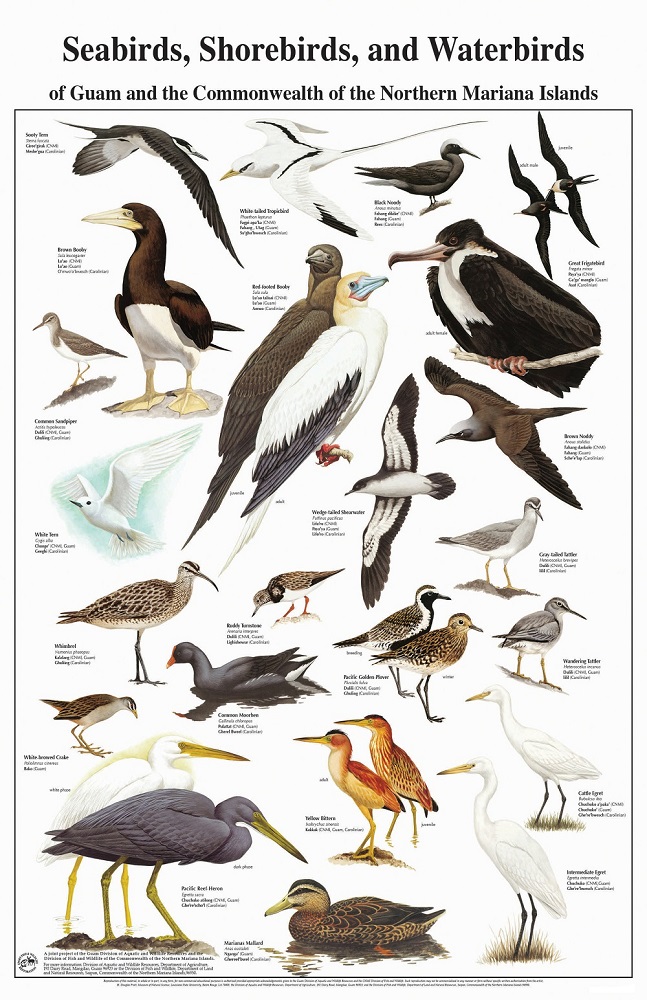
Keep your eyes open! Saipan is home to a variety of sea and land birds. During your tour, you're likely to hear then see the unmistakable bright blue and white Kingfisher or the Pacific Reef Heron while you're on the beach!
Categories: Nature
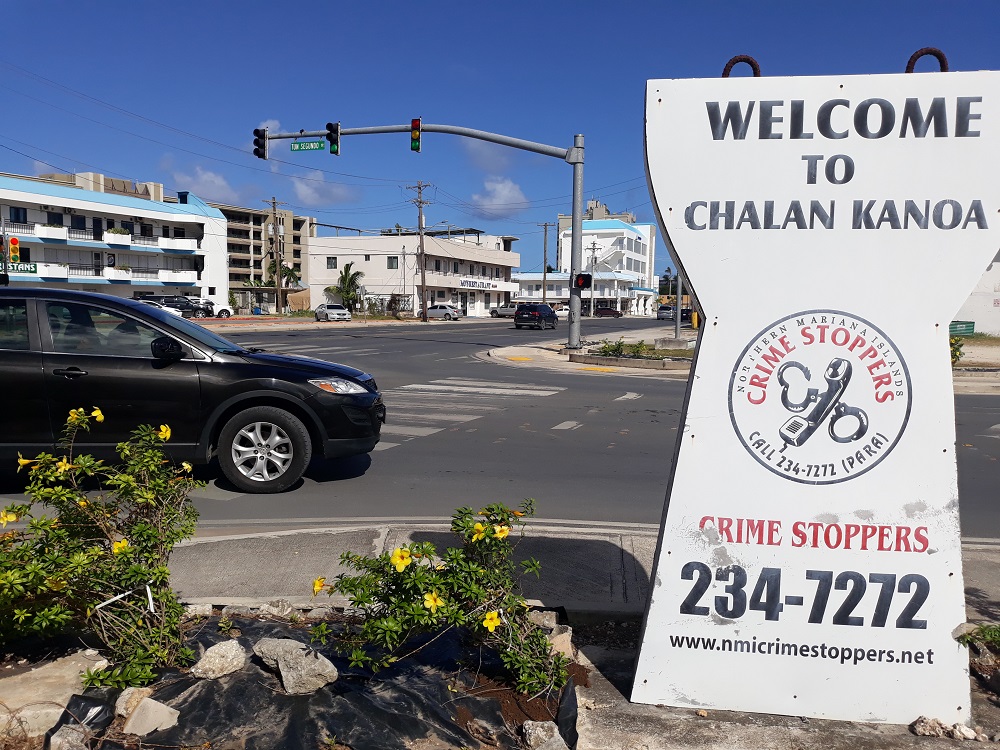
Prior to Japanese administration, the Chalan Kanoa area served as a large coconut plantation for the copra trade and cattle husbandry that served as one of the five Spanish crown deeds. It bears a name from a long line of water troughs for the cattle. In 1916, two Japanese firms attempted to establish sugar industry on Saipan. One failed, stranding about 1,000 imported Japanese laborers with their barracks in Chalan Kanoa. The second, headed by Haruji Matsue, succeeded and Chalan Kanoa became the site of a mill town for hundreds of laborers who worked in the nearby sugar mill. Only Japanese and Okinawans resided in Chalan Kanoa in the pre-war years. Following the battle of Saipan, the village was used as a civilian camp where Chamorros and Carolinians were provided emergency shelter and food. Following the closure of the Camp in July 1946, Chalan Kanoa became the largest residential village on Saipan. Historical remnants from the Japanese administration can be seen throughout the village including two well-preserved wooden residences.
Categories: Pre-war Japanese society, Contemporary CNMI life
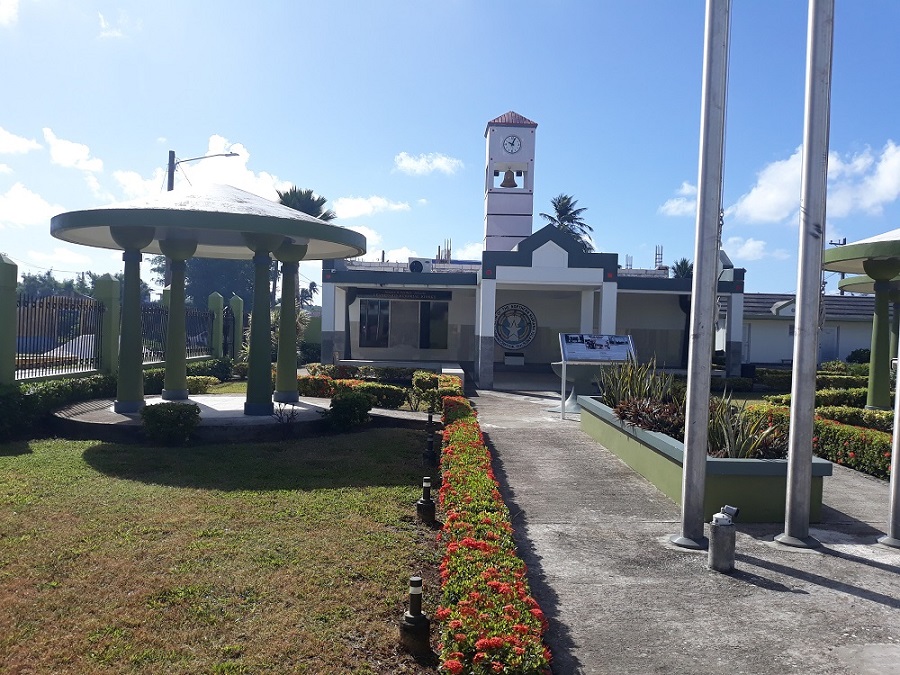
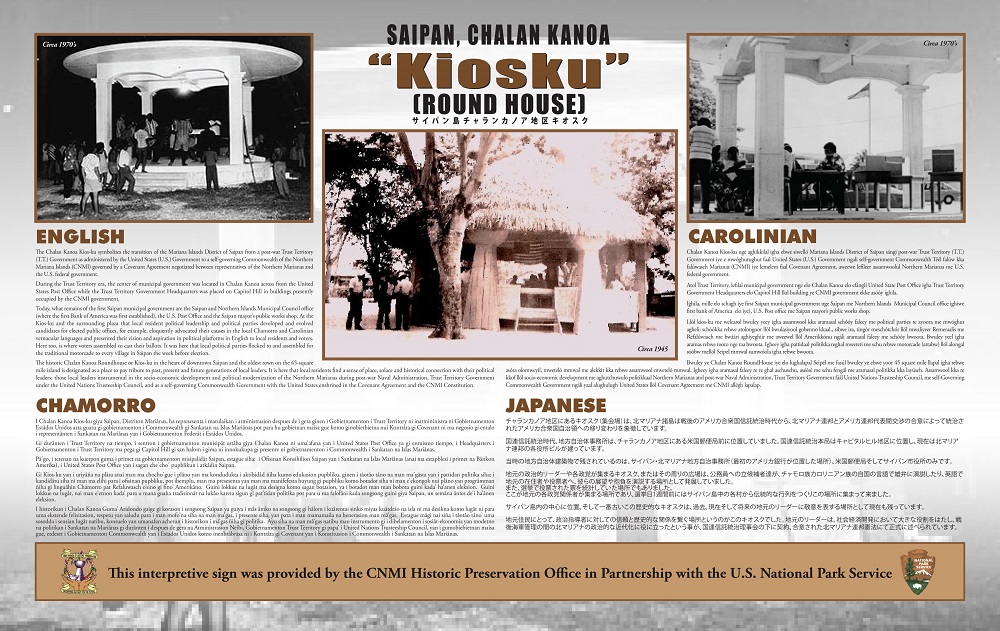
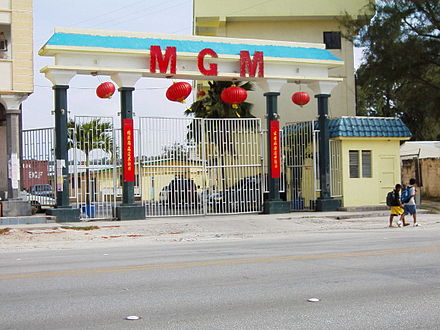
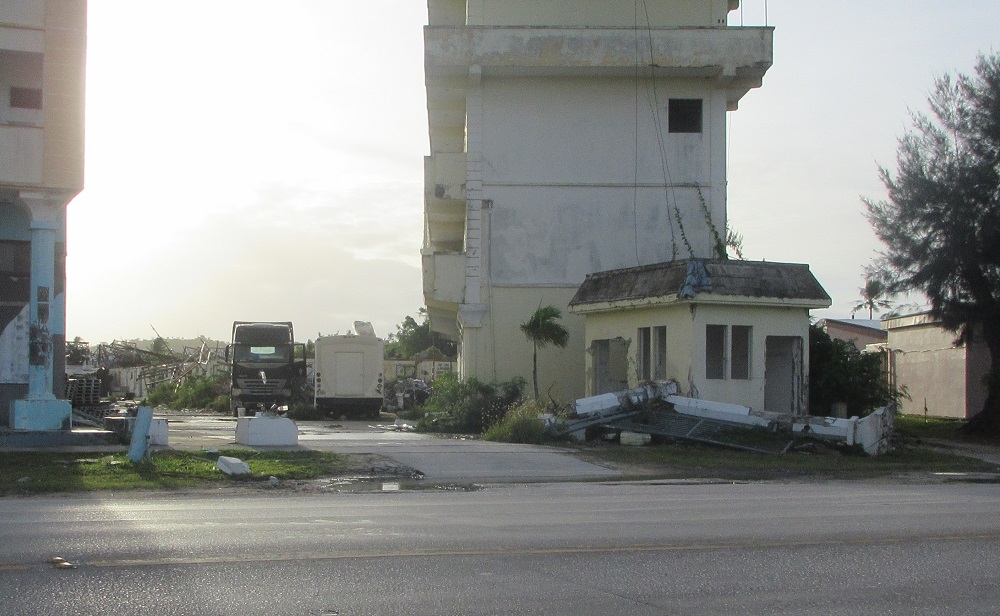
Saipan was home to a thriving garment industry from the mid 1980s until the last garment factory closed in 2009. From a high of 36 factories back in the mid to late 1990s, the last factory closed on January 15, 2009.Tourism had traditionally been a vital source of the island's revenue and economic activities. But in the 1980s, garment manufacturing became one of the main economic driving forces in Saipan when the U.S. government agreed that the CNMI would be exempted from certain federal minimum wage and immigration laws. While one result of these changes was an increase in hotels and tourism, the main consequence was that dozens of garment factories opened and clothing manufacturing became the island's chief economic force, employing thousands of foreign contract laborers (mostly young Chinese women) at low wages. The manufacturers could legally label these low cost garments "Made in the U.S.A." and the clothing shipped to the U.S. market was also exempt from U.S. tariffs. By 1998, the Saipan garment industry exported close to $1 billion worth of apparel products to the mainland. The working conditions and treatment experienced by employees in these factories were the subject of controversy and criticism.
In addition to many foreign-owned and run companies, many well-known U.S. brands also operated garment factories in Saipan for much of the last three decades. Brands included Gap (as of 2000 operating six factories there), Levi Strauss, Phillips-Van Heusen, Abercrombie & Fitch, L'Oreal subsidiary Ralph Lauren (Polo), Lord & Taylor, Tommy Hilfiger, and Walmart.
Over the years since January 2009, when the last factory ceased operations, many of the sites like the one shown here have deteriorated. Here is what MGM Factory looked like then, and what it looks like now (2020).
More information: http://www.saipanfactorygirl.com
Categories: Contemporary CNMI life
